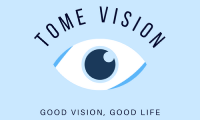Eye Health in Aging Populations: Protecting Vision as We Grow Older
As we age, it is inevitable that certain changes occur in our bodies, and our eyes are no exception. The risk of developing various eye conditions and diseases increases with age, making it crucial to prioritize eye health as we grow older. With proper care and regular eye examinations, it is possible to protect our vision and maintain good eye health well into our golden years.
Subheading 1: Common Age-Related Eye Conditions
1. Presbyopia: One of the first noticeable changes in vision during middle age is the loss of near vision clarity. Known as presbyopia, it occurs due to the gradual hardening of the lens in the eye, making it difficult to focus on nearby objects. Reading glasses or multifocal lenses are commonly used to correct this condition.
2. Cataracts: Cataracts are cloudy areas that form in the lens of the eye, leading to blurry or hazy vision. They often develop slowly and are more common in older adults. Surgery, where the cloudy lens is removed and replaced with an artificial lens, is a common treatment for cataracts.
3. Dry eye syndrome: Dry eyes are a result of reduced tear production or decreased tear quality. This condition is more common as we age and can cause discomfort, redness, and irritation. Artificial tears and lifestyle changes, such as avoiding dry environments and using humidifiers, can help alleviate dry eye symptoms.
4. Glaucoma: Glaucoma is a group of eye conditions that cause damage to the optic nerve, leading to gradual vision loss. It is more prevalent in older adults and often has no noticeable symptoms in the early stages. Regular eye exams are crucial for early detection and treatment to prevent further damage.
Subheading 2: Tips for Maintaining Eye Health
1. Regular eye exams: It is recommended to have a comprehensive eye examination at least every two years, especially as we age. Regular check-ups can help identify early signs of eye conditions and ensure timely treatment.
2. Healthy diet: A balanced diet rich in fruits and vegetables, particularly those high in antioxidants and omega-3 fatty acids, can help protect against age-related macular degeneration (AMD) and other eye diseases. Leafy greens, colorful fruits, and fish are excellent choices for maintaining good eye health.
3. UV protection: Prolonged exposure to ultraviolet (UV) radiation can increase the risk of cataracts and other eye conditions. Wearing sunglasses that block 100% of UV rays and a wide-brimmed hat when outdoors can provide adequate protection for the eyes.
4. Quit smoking: Smoking is not only harmful to overall health but has been linked to an increased risk of developing AMD, cataracts, and other eye conditions. Quitting smoking can significantly improve eye health and reduce the risk of vision loss.
5. Manage chronic conditions: Chronic conditions such as diabetes and hypertension can affect eye health. It is essential to manage these conditions and keep them under control to prevent potential eye complications.
6. Rest and relax: Prolonged periods of screen time may cause eye strain, dryness, and fatigue. Follow the 20-20-20 rule to minimize eye strain: every 20 minutes, look at something 20 feet away for at least 20 seconds. Additionally, getting enough sleep every night allows the eyes to rest and rejuvenate.
Maintaining good eye health in aging populations requires a proactive approach. By following these tips and seeking regular eye care, we can reduce the risk of eye conditions, protect our vision, and enjoy a clear and vibrant outlook as we age. Remember, healthy eyes contribute to overall well-being and a higher quality of life.
